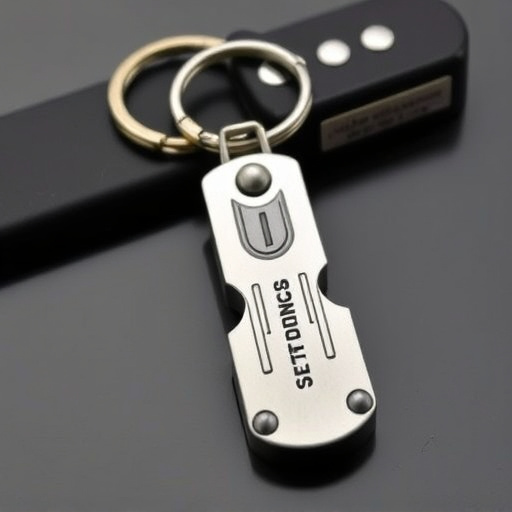Carrying permitted self-defense keychain tools like small knives, pepper spray, or flashlights for personal safety is legal in many regions if specific criteria—level of threat, lack of escape options, and proportionality—are met. Local laws vary, so consulting legislation and seeking legal guidance is crucial. Effective self-defense requires understanding these tools' limitations and using them responsibly within legal boundaries.
“Uncover the power of self-defense at your fingertips with legal keychain weapons. In an uncertain world, understanding your rights and choosing the right defense tool is paramount. This guide explores the legal definitions of self-defense, highlighting the types of permitted keychain tools available.
From compact pepper sprays to advanced stun devices, discover which options align with your needs. Learn how to select the ideal self-defense keychain for your situation while navigating legal considerations and responsibilities. Empower yourself with knowledge and choose wisely.”
- Understanding Legal Definitions of Self-Defense
- Types of Permitted Keychain Self-Defense Tools
- Choosing the Right Self-Defense Keychain for You
- Legal Considerations and Responsibilities
Understanding Legal Definitions of Self-Defense
In many jurisdictions, the concept of self-defense is a fundamental legal principle designed to protect individuals from unreasonable use of force in the face of imminent danger. Understanding what constitutes permitted self-defense keychain tools is crucial. These small, portable devices, often in the form of keychains with hidden blades or other tactical functions, are marketed as means for personal protection. However, their legal applicability varies widely based on regional laws and specific circumstances.
For such tools to be considered lawful self-defense weapons, they must meet certain criteria. This includes factors like the level of threat posed, whether the individual had no other reasonable option for escape or de-escalation, and if the force used was proportional to the perceived danger. It’s essential to consult local legislation and seek legal advice to discern which keychain tools, if any, are permitted as permitted self-defense keychain tools under specific circumstances.
Types of Permitted Keychain Self-Defense Tools
In the realm of personal safety, individuals often seek accessible and discreet means of self-defense, leading many to consider keychain weapons as a viable option. When it comes to permitted keychain self-defense tools, the market offers various options designed for different needs and preferences. From simple metal keys with sharp edges to more advanced tactical keychains equipped with pepper spray or flashlights, these compact devices can provide a sense of security in unexpected situations.
The types of allowed self-defense keychain tools vary across jurisdictions, reflecting local laws and regulations. Common choices include small knifes or blades designed for self-defense purposes, though their legality is subject to restrictions. Other popular options are pepper spray keychains, offering a non-lethal way to incapacitate an assailant temporarily. Some models even integrate a flashlight feature, enhancing visibility during potentially dangerous encounters. Additionally, tactical keychains with built-in tools like screwdrivers or wrenches can aid in escaping tricky situations, though their practical use for self-defense may be limited.
Choosing the Right Self-Defense Keychain for You
When selecting a self-defense keychain, it’s crucial to consider your specific needs and legal constraints. Not all keychains are created equal when it comes to legality—what works in one jurisdiction might not be permitted in another. Always check local laws and regulations regarding concealed weapons and self-defense tools before making a purchase.
The ideal self-defense keychain should balance ease of use, effectiveness, and legality. Permitted self-defense keychain tools often include options like pepper spray, tactical flashlights with stun features, or compact knives designed for self-defense. Each tool has its strengths and weaknesses, so evaluate your environment and threat levels to make an informed decision that ensures your safety without crossing legal boundaries.
Legal Considerations and Responsibilities
When considering a legal self-defense keychain weapon, it’s crucial to understand the permitted self-defense keychain tools and their corresponding legal considerations. Each jurisdiction has unique laws regarding what constitutes lawful self-defense and the types of weapons allowed. Always check local regulations to ensure the keychain tool you choose is legal in your area.
Carrying a self-defense device comes with responsibilities. Users must act within the bounds of the law, using force only as a last resort and only when necessary to protect themselves or others from imminent harm. Proper training and understanding the risks involved are essential. Remember, even legally permitted tools can have legal repercussions if misused.
When equipped with the right knowledge and tools, individuals can protect themselves legally using keychain self-defense weapons. Understanding the legal definitions of self-defense and choosing appropriate keychain tools tailored to your needs is essential. Always stay informed about local laws and be mindful of your responsibilities. Opting for permitted self-defense keychain tools can empower you to confidently navigate potentially dangerous situations while adhering to legal boundaries.
